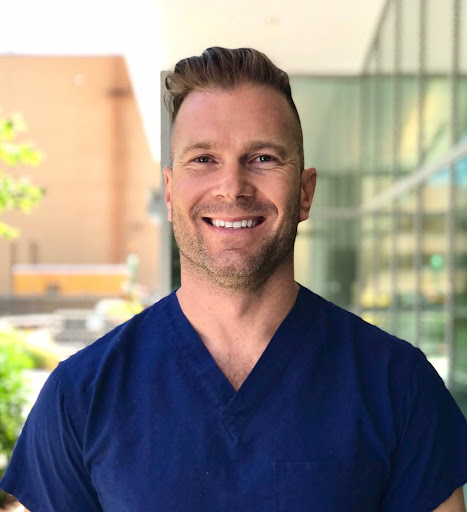Dr. Raymond G. Elmore is a distinguished physician based in Santa Fe, New Mexico, specializing in obstetrics and gynecology. With over two decades dedicated to enhancing women’s healthcare across the United States, his expertise and commitment are well-recognized. Dr. Elmore’s academic journey began at the University of Texas at Austin, where he completed his undergraduate studies in liberal arts. He furthered his medical education at the University of Texas Southwestern Medical Center, graduating in 2006, followed by an intensive four-year residency at Cedars-Sinai Medical Center in California.

Throughout his career, Dr. Elmore has practiced in various states, including California, New Mexico, Arizona, and Florida, accumulating a wealth of experience and contributing significantly to each community he served. His leadership roles are particularly notable, having served as Medical Director at the Presbyterian Healthcare System in Albuquerque and as Director of Perinatal Safety at Advent Health Ocala, Florida in 2021.
In addition to his clinical and administrative roles, Dr. Elmore is an avid scholar and educator. He completed a Master of Science in Healthcare Leadership from Brown University in 2023, equipping him with advanced skills to lead and innovate in healthcare settings. His research contributions, especially in ovarian cancer, highlight his dedication to advancing medical knowledge and treatments. Dr. Elmore’s work has gained recognition at national conferences, including a significant presentation at the Society of Gynecologic Oncologists’ national conference.
Beyond his professional life, Dr. Elmore is passionate about sharing his insights on current medical topics through various articles on LinkedIn, covering issues like maternal healthcare, vaccine hesitancy, and physician unionization. His personal interests include scuba diving and traveling, activities that allow him to explore and enjoy diverse cultures and environments. Dr. Elmore’s comprehensive career and personal pursuits illustrate his commitment to providing exemplary care and improving healthcare practices and policies.
The Intersection of Technology and Nature Conservation: Emerging Tools for Biodiversity
In a data-dominant era, big data has become a mighty weapon in nature conservation. Scientists can gain more accurate insights into the dynamics of their ecosystems as they gather huge volumes of environmental data from sensors and satellites. The information from these sensors permits tracking of these parameters (species populations, deforestation rates, and habitat destruction) in real time. Tools, including Global Forest Watch, use satellite imagery to track global deforestation in real time, saving forests by prompt interventions.
The Role of Artificial Intelligence in Species Monitoring
The evolution of artificial intelligence (AI) is reshaping how we address the biodiversity crisis. AI algorithms that process images and sound processing can detect and track species more accurately than humans. For example, an AI-enabled system of camera traps and sound sensors detects and records the occurrence of elusive wildlife without the need for human intrusion. This makes studying and protecting these species easier while minimizing human disturbance in the natural environment. This tech expands our biodiversity knowledge and guides us in conservation area management.
Drones: Eyes in the Sky
Drones are increasingly used in conservation to monitor vast and inaccessible areas, offering a bird’s-eye view that humans cannot achieve. These unmanned aerial vehicles can travel over forests, oceans, and mountains, collecting data on wildlife populations and their habitats. Using drones is particularly beneficial in monitoring endangered species and tracking illegal activities such as poaching and logging. With thermal imaging and high-resolution cameras, drones provide detailed insights crucial for effective conservation planning.
Genetic Assessment for Conservation Purposes
Advancements in genetic technologies have opened new avenues for biodiversity conservation. Through genetic analysis, scientists can study the genetic diversity within populations, understand their evolutionary processes, and identify genetic markers for diseases and resilience. This information is vital for breeding programs and reintroductions, ensuring that genetically diverse and resilient populations are maintained or restored in their natural habitats. Moreover, environmental DNA (eDNA) sampling allows researchers to detect species from water samples without seeing or capturing the animals, reducing the impact on the studied populations.
Combining Traditional Knowledge with Modern Technology
Technology paves the way for novel tools in conservation. However, stronger conservation outcomes come when these are integrated with traditional ecological knowledge. Indigenous peoples have maintained their natural surroundings sustainably for thousands of years, employing their traditional practices. When coupled with today’s technologies, this knowledge will empower conservation efforts that are sensitive to cultures and environmentally successful. Collaborations with indigenous communities and technologists are proving to create conservation strategies that cherish traditions as opposed to just applying modern technologies.
The hybridization of technology and conventional conservation methods is more than just amplifying the capacities of biodiversity monitoring and preservation. Still, it is also rejuvenating the discipline of conservation into an increasingly accurate and effective field. With technology development, the involvement of technology in conservation tactics will thus result in more creative and innovative solutions targeted at preserving the delicate biodiversity that we have for generations to come. Utilizing these tools will enable conservationists to fight the environmental threats arising from modern complexities and nature more efficiently and sustainably.
